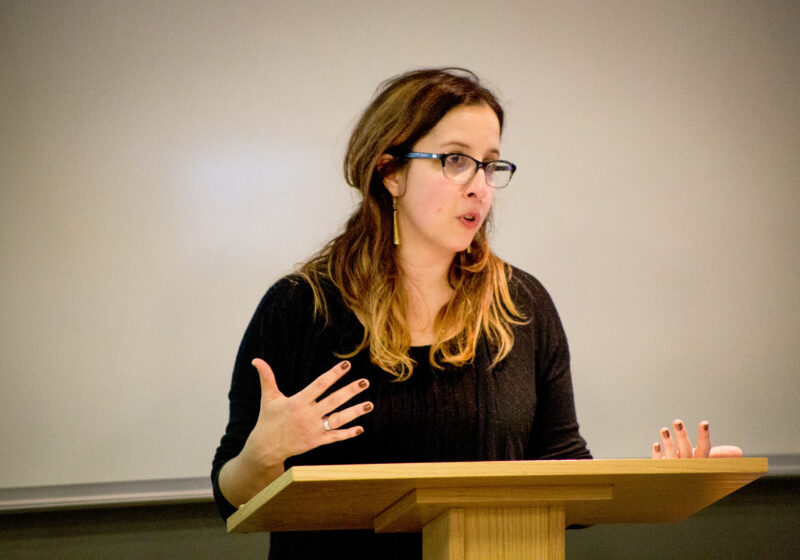The top of Rush Rhees Library is a mystery – it’s a place that everyone sees, but no one goes. The dome is open only two days a year, so most students reach graduation without ever having seen the inside. Yet all it takes is a trip on an old-fashioned gated elevator and up a small spiral staircase to arrive at the most far-reaching view on campus and possibly the best in the city. In the dome, just below that outdoor catwalk, is another UR secret: a 48 bell concert class carillon, one of only 117 in the country.
Students walking to class have heard the instrument every time the bells toll for the campus clock. Suspended in the library dome, there is a small room with a wooden keyboard of hammers. The hammers are struck with fists to create music, sounding the bells above – the same bells of the clock.
The carillon is a historic and public instrument associated with churches and cities and music heard by everyone, with a repertoire ranging from baroque to jazz. It’s also the largest acoustic instrument in the world. The Riverside Church carillon in New York City has a bell weighing six tons, which is a pretty big bell. Here at UR, the Hopeman Memorial Carillon, upgraded from a 43-year-old set of chimes in 1973, weighs three and a half tons.
“The carillon adds a real sense of tradition to the campus,” chair of the Music Department, John Covach, who is responsible for the instrument, said.
This semester, students are finally aware that it is more than a chime every quarter hour. Tiffany Ng, an Eastman graduate student, has taken to playing the instrument on a regular basis. She often makes the trip up the gated elevator to play for the school community.
“I try not to play anything I don’t want people to hear,” she said. “When I play, it’s a performance.”
Students have not been afforded regular presentations on the carillon in decades, since the disappearance of a student-run carillon guild in the 1970s.
“A large part of the reason I came to Rochester was because I knew that this carillon had gone silent and I wanted to do something about it,” Ng said.
Fewer than five carillon degree programs exist in the United States, making players hard to come by. Recently UR has recruited community members to play certain events, but the days of undergraduates playing the instrument are no more, something Ng hopes to change.
“This carillon belongs to undergrads,” she said. “My main goal is to establish a self-perpetuating student guild.” Ng was involved in a similar carillon group as an undergrad at Yale University.
Unfortunately, right now any student guild remains impossible because the route to the carillon is a lawsuit waiting to happen. The high open staircase in the dome is dangerous enough that the music department won’t give keys to undergraduates to use at will. Ng is only allowed access because she has a trusting relationship with the music department.
“As a graduate student, they’re a little less likely to think I’ll make trouble up here,” she said.
Fountaine can be reached at cfountaine@campustimes.org.



